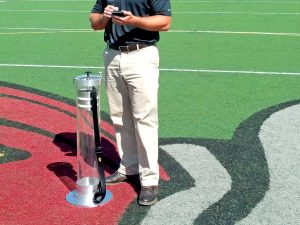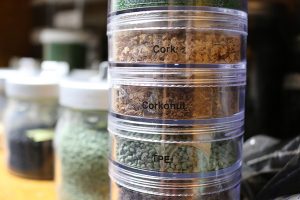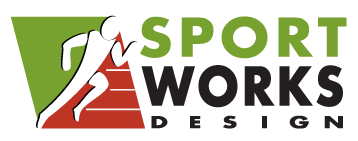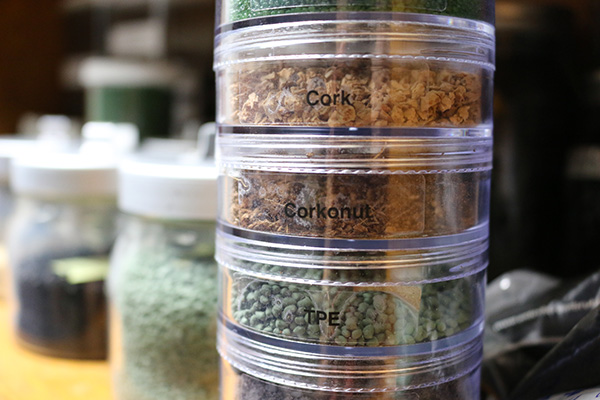Sportworks Field Design was pleased to participate in the OSBA Capital Conference last month. Not only do we often see dozens of past clients at the events, we love hearing directly from administrators, school board members and district staff about their questions, ideas and success stories.
As field and court technology changes and becomes more advanced, each year we hear new questions. Since we know that when one person has a question, there are usually dozens more with the same concern, we thought we would share some of our most common questions and their answers. Below are a sampling:
We installed a new field, what’s the ideal maintenance schedule?

Routine grooming should happen on a new synthetic turf field as often as once per week but no less than once every few weeks. After 3 years, we suggest owners begin an annual gmax testing regiment to ensure the field is still absorbing impact at an acceptable level. Testing is also available for many specific problems, such as verifying drainage rates or ensuring ball roll staying true. Often times owners can extend the life of their field by having the these tests conducted in the appropriate manner. Always consult with the turf manufacturer on proper grooming schedules and techniques specific to their system.
I’ve heard about crumb rubber in the news, is it safe?
Synthetic turf fields are made up of two main components: the fibers (the part that looks like grass) and the infill (small particles that help the grass blades stand up and create impact absorption similar to soil or sand). By far, the most common type of infill is crumb rubber, which is made from recycled tires. Awhile black crumb rubber had been in the news as a potential cancer risk. Since then numerous independent studies have been done on crumb rubber and no scientific evidence has been found to link crumb rubber to an elevated risk of cancer. However, knowing perception is sometimes reality, Sportworks designs fields with dozens of other types of infill that can be used in its place.

A wide variety of infill can replace crumb rubber. Some examples include cork, corkonut and TPE.
Can you combine any fibers with any type of infill?
Yes! Depending on your budget there are a number of alternative infill types available including cork, acrylic coated sand, corkonut, EPDM, TPE, walnut and many others. However, when using an alternative infill, you will most likely need to combine it with an underlayment shock pad for impact attenuation.
What is the difference between the different types of fibers?
There are two main types of fibers – monofilament and slit-film fibers. A slit-film fiber will typically be more durable of the two. Slit film fibers are a wider tape like fiber that is perforated and will fibrillate by design as field use increases to improve durability. The monofilament is a single strand fiber that is more aesthetically pleasing. Monofilament fibers also lead to a preferred ball roll, particularly for soccer.
You don’t sell or install turf fields, what role do you play?
Although the new synthetic turf is what you see, sometimes what you don’t see is more important. Sportworks Field Design is a group of civil engineers and landscape architects focused on ensuring the field drains properly, meets grading requirements, and functions as it should. We also offer site design plans, create construction documents and specifications, work through necessary permitting and offer construction administration. We’ve designed hundreds of fields and can also serve as impartial expert early on to sort through the multitude of options out there and ensure you get a field that balances both cost and quality to fit your needs.
We can’t afford synthetic turf, do you do natural grass?
Yes! We’ve designed dozens of high school and collegiate natural grass fields. Although the needs are slightly different, we are happy to help you work through the process.
Have more questions? Contact Craig Honkomp at (513) 773-4626.

